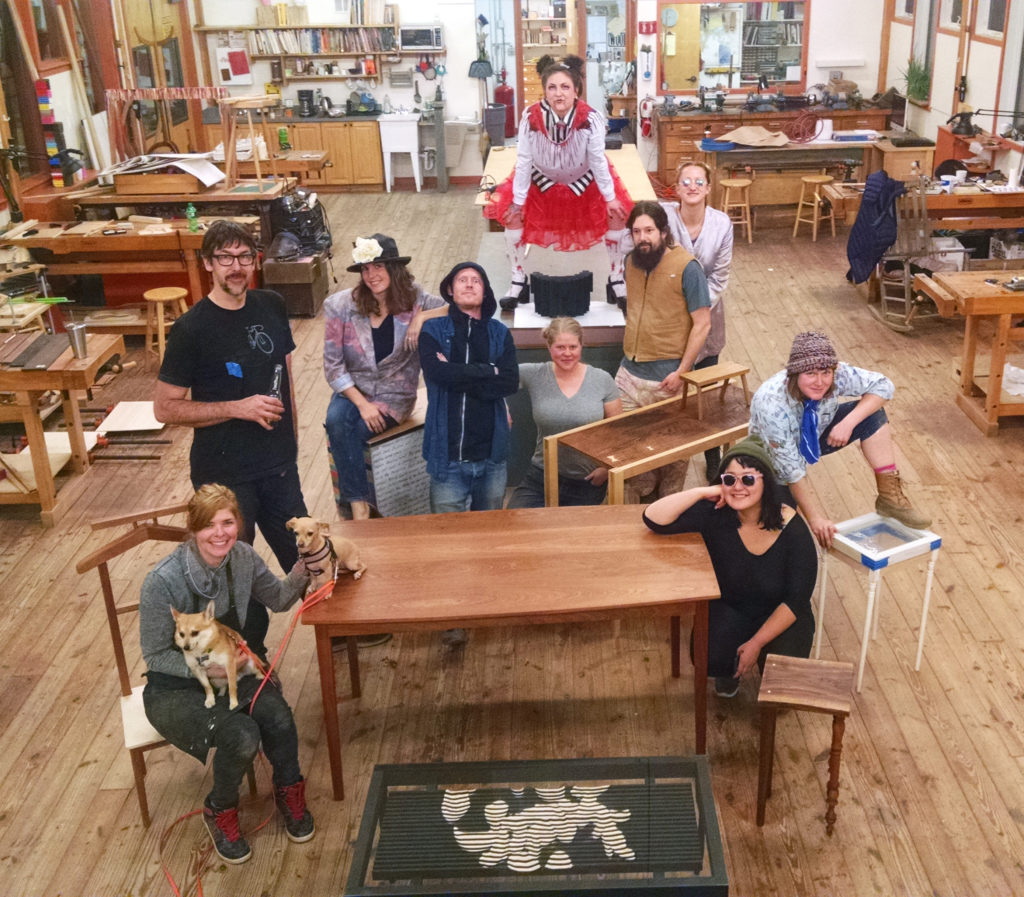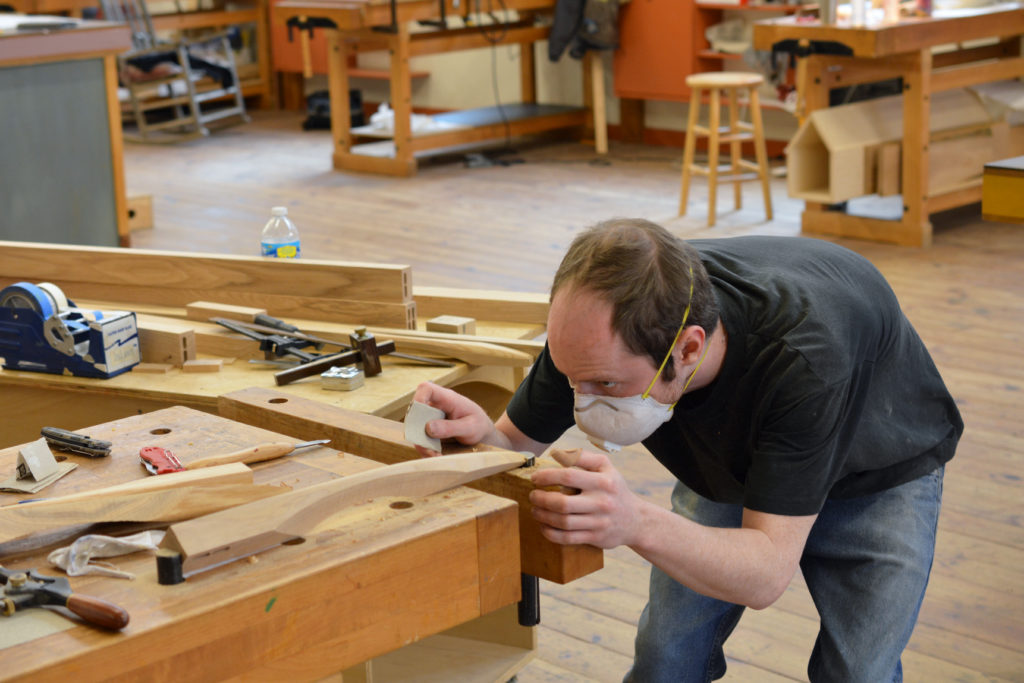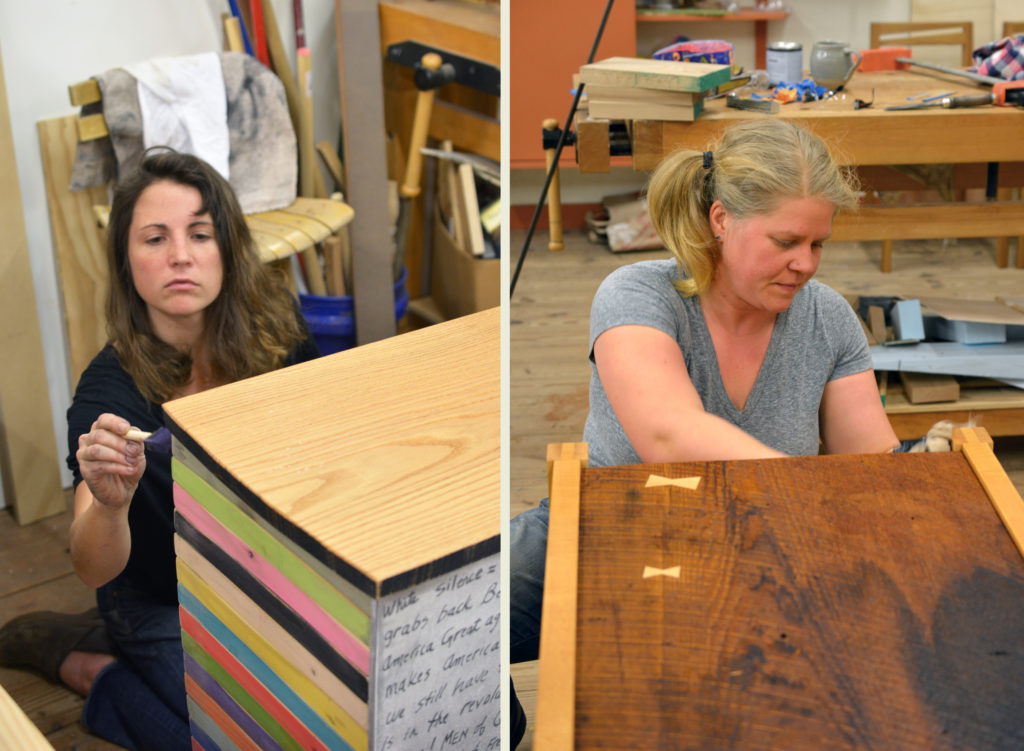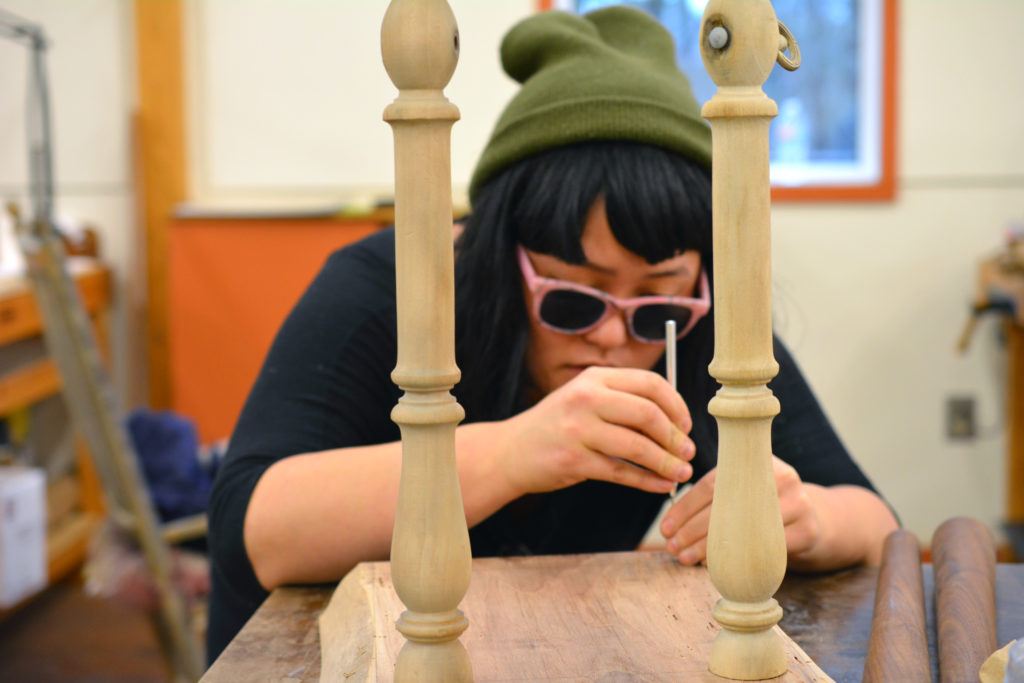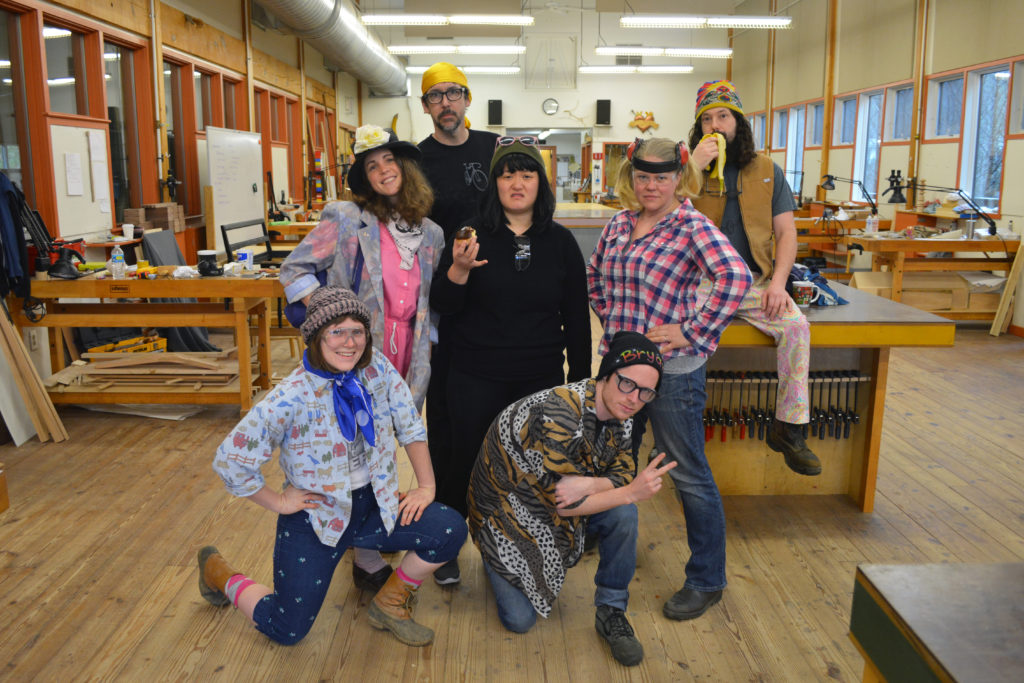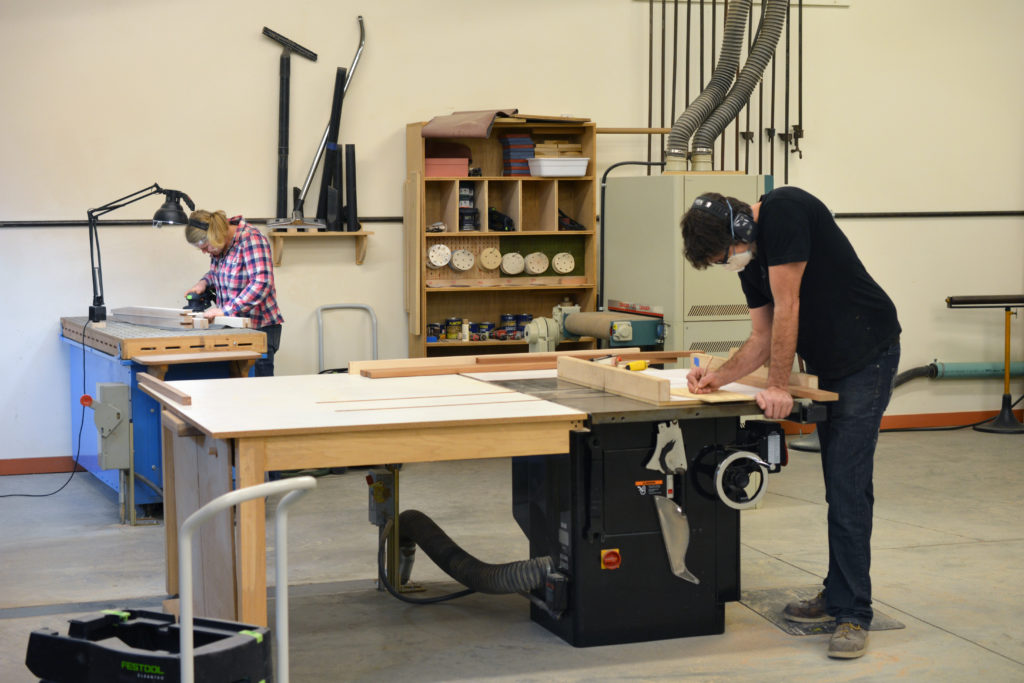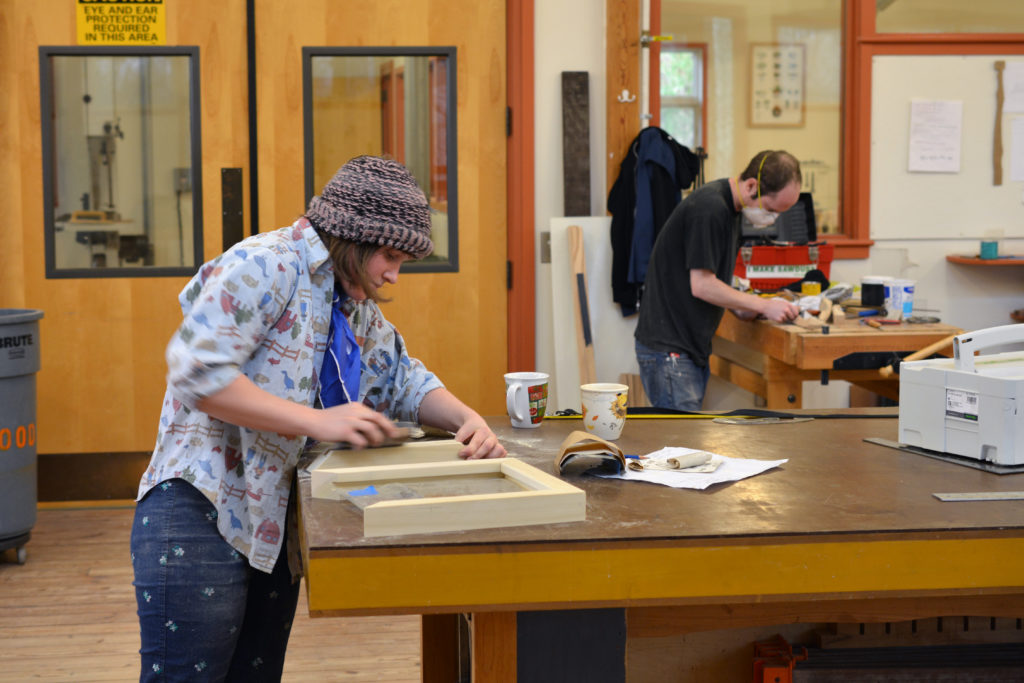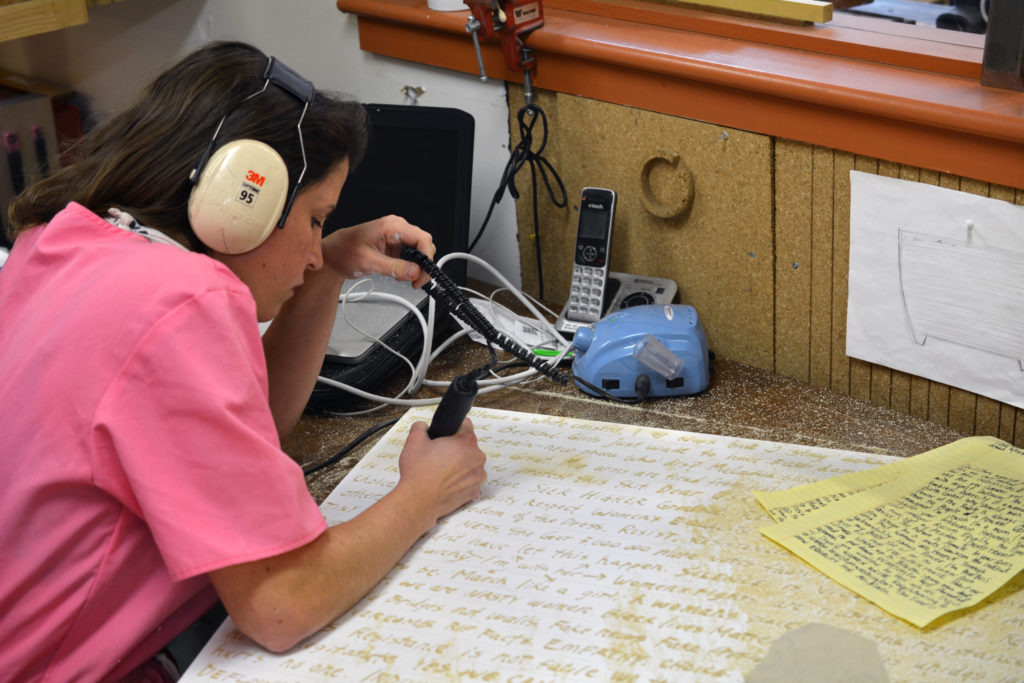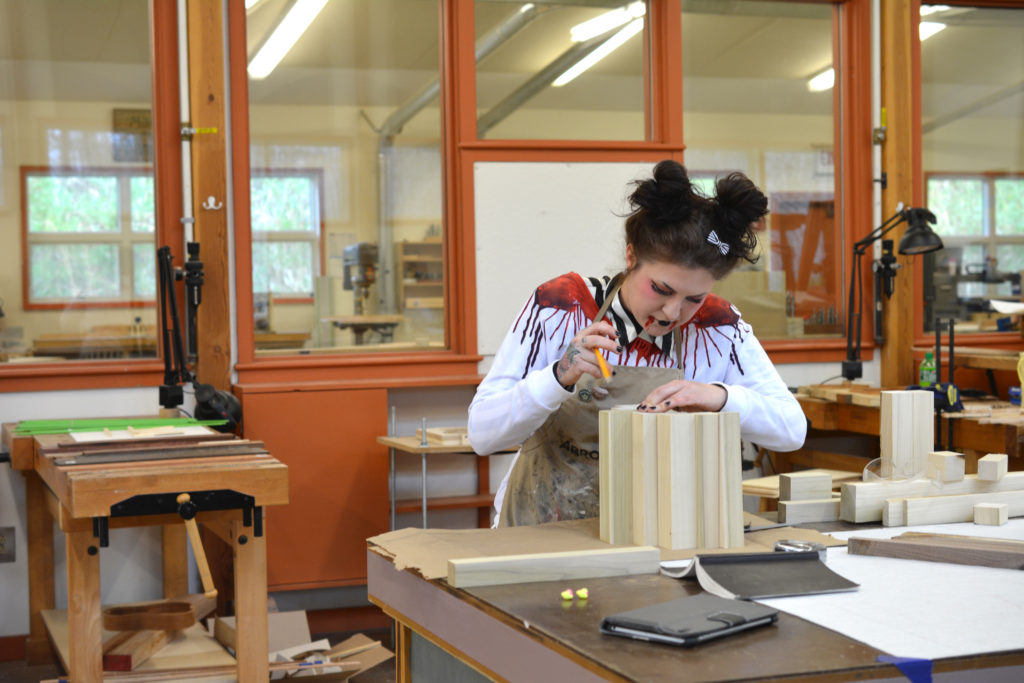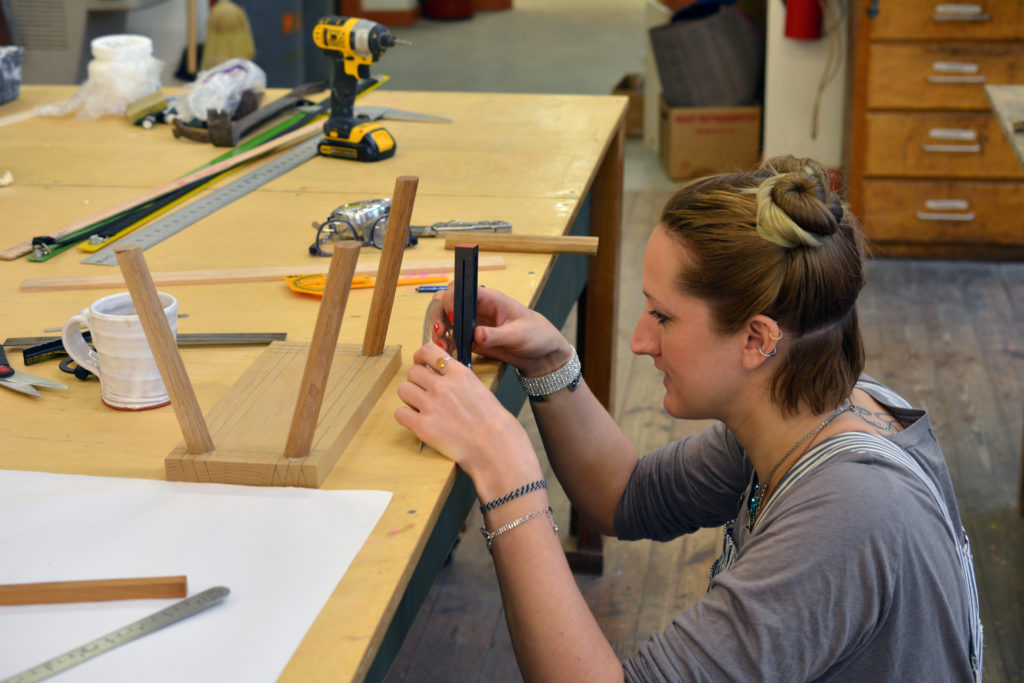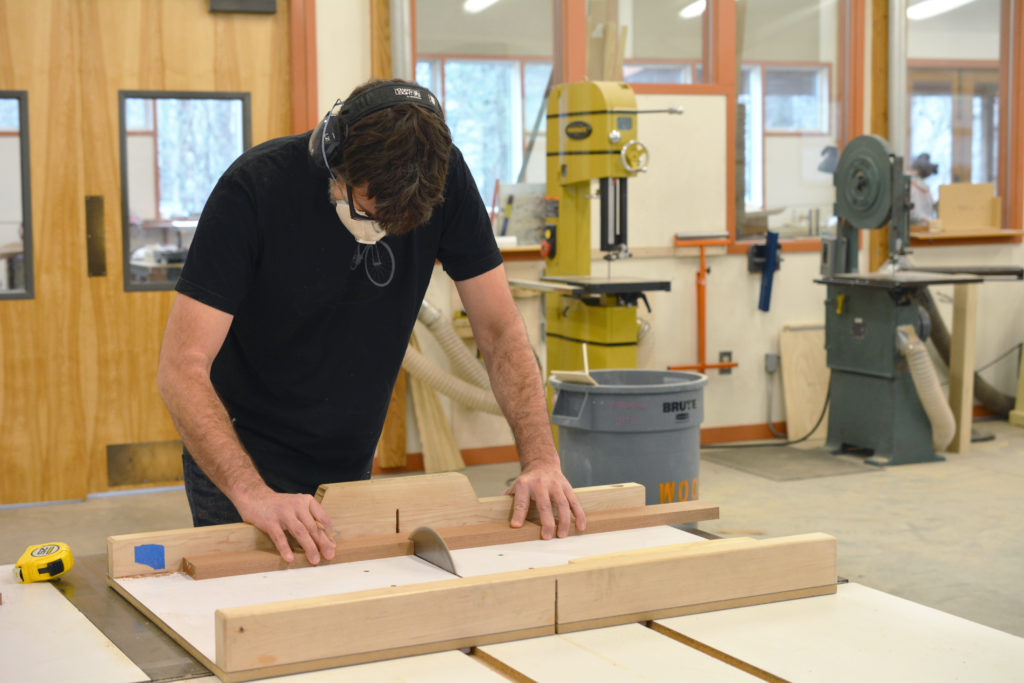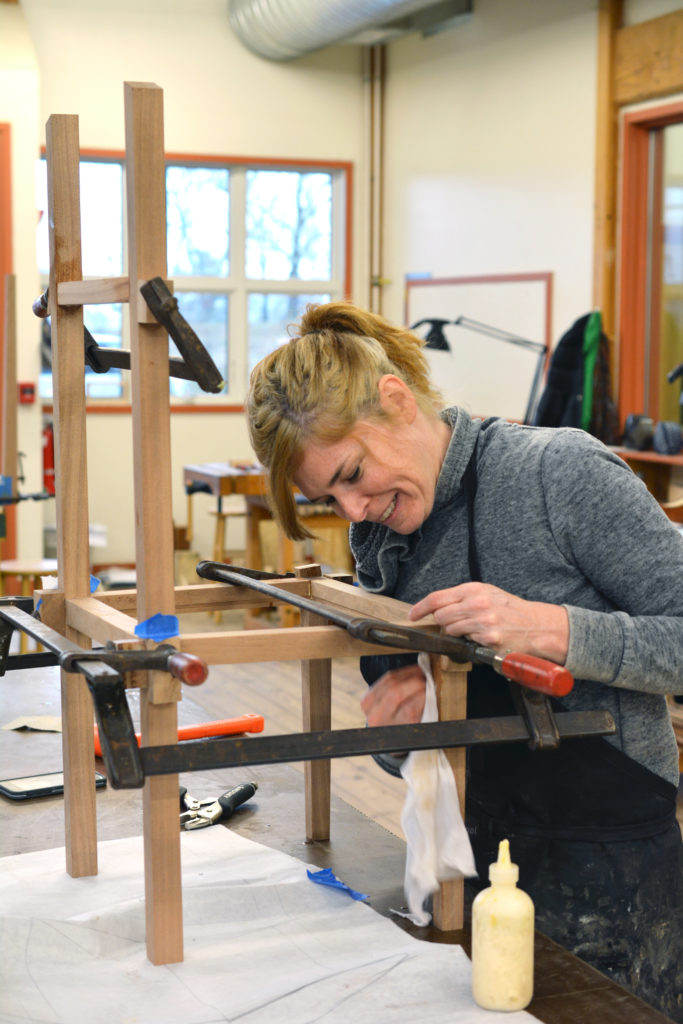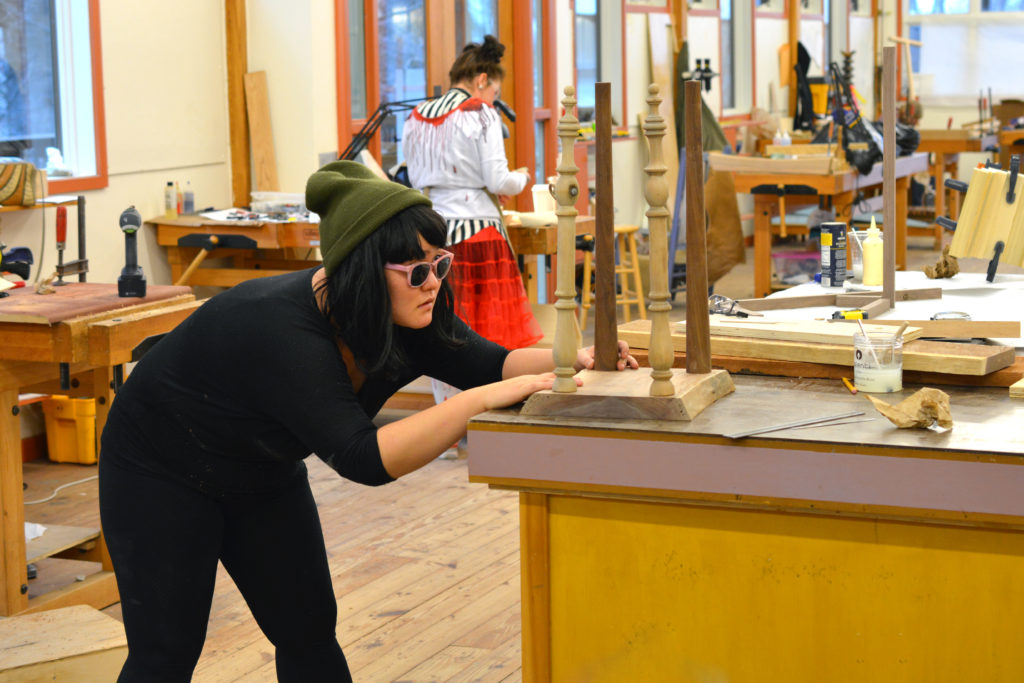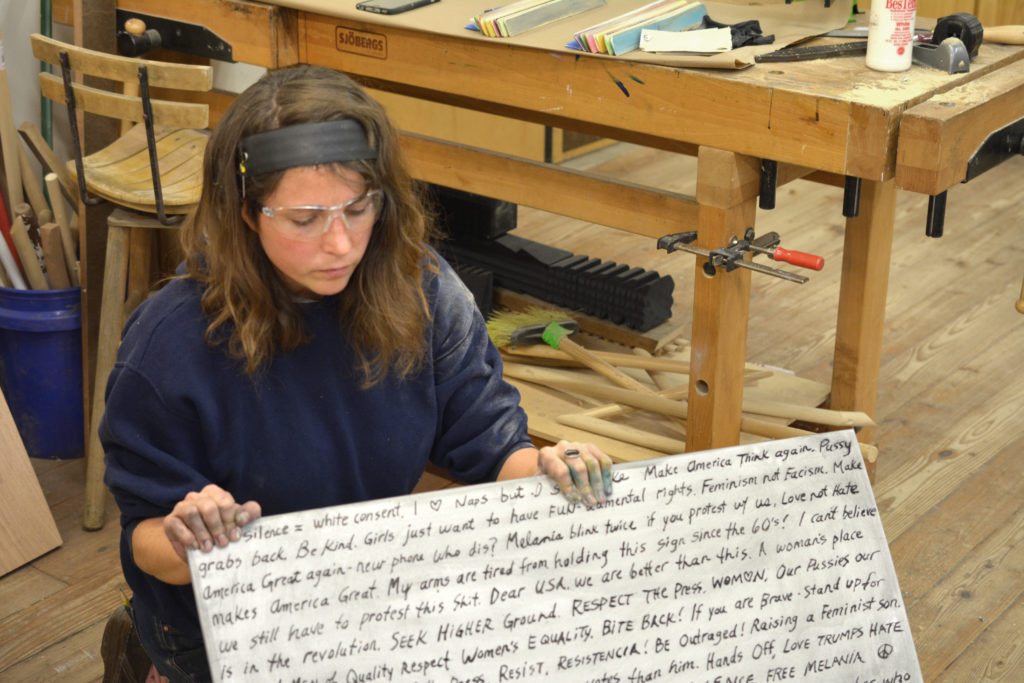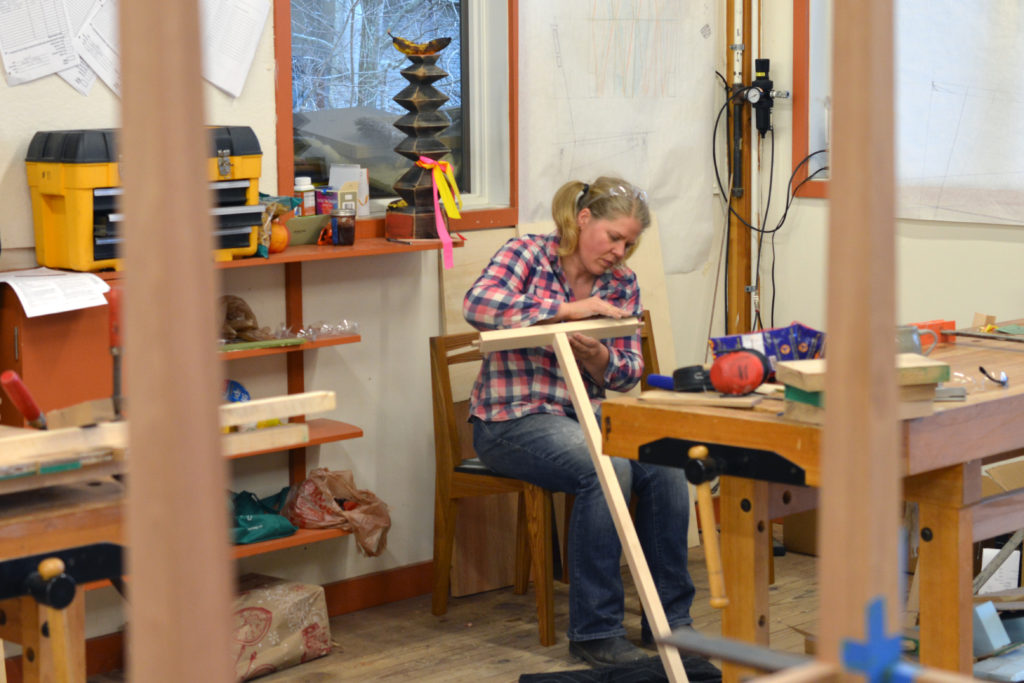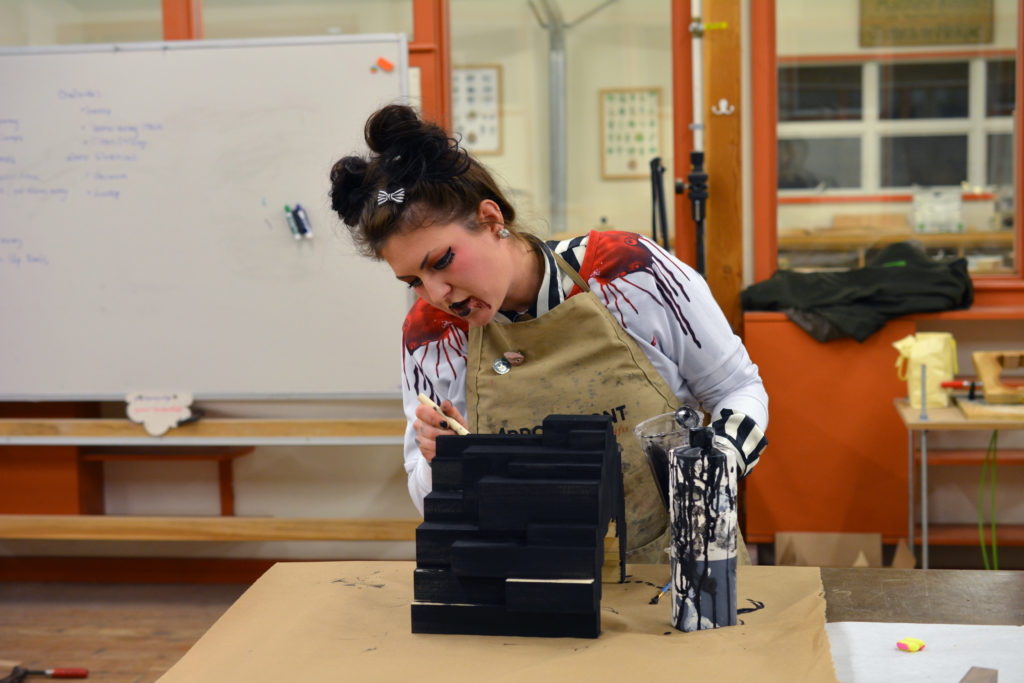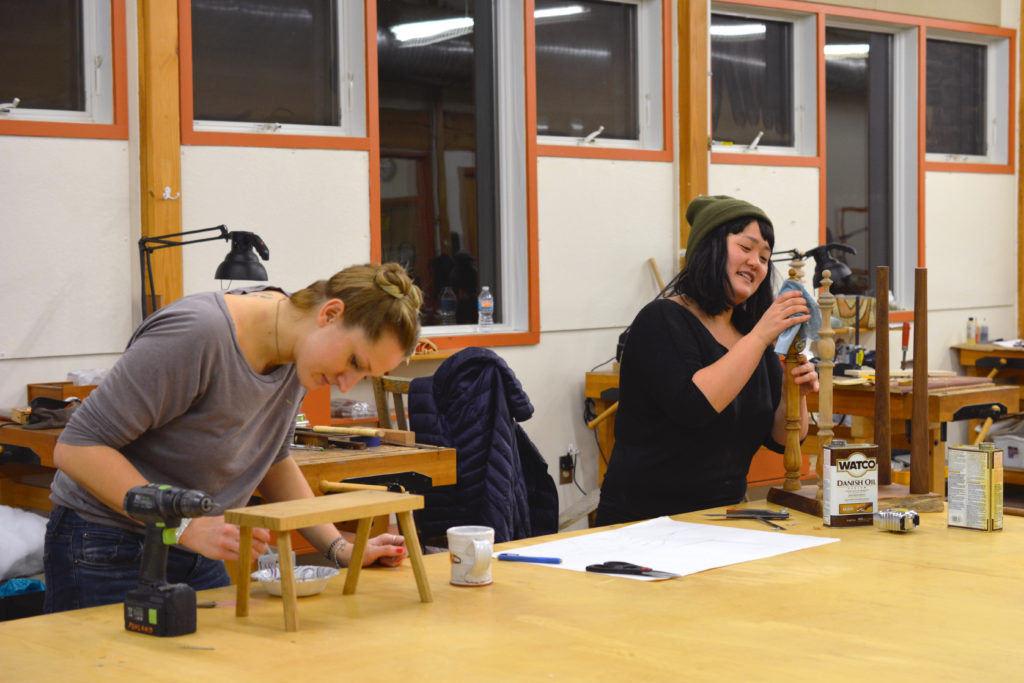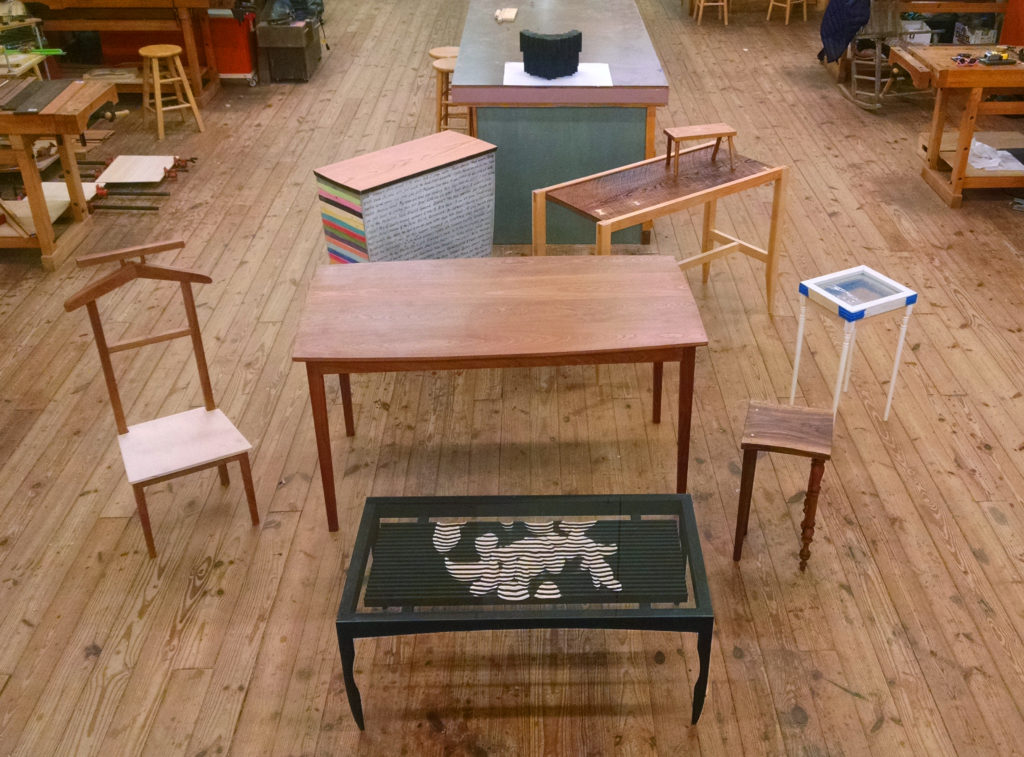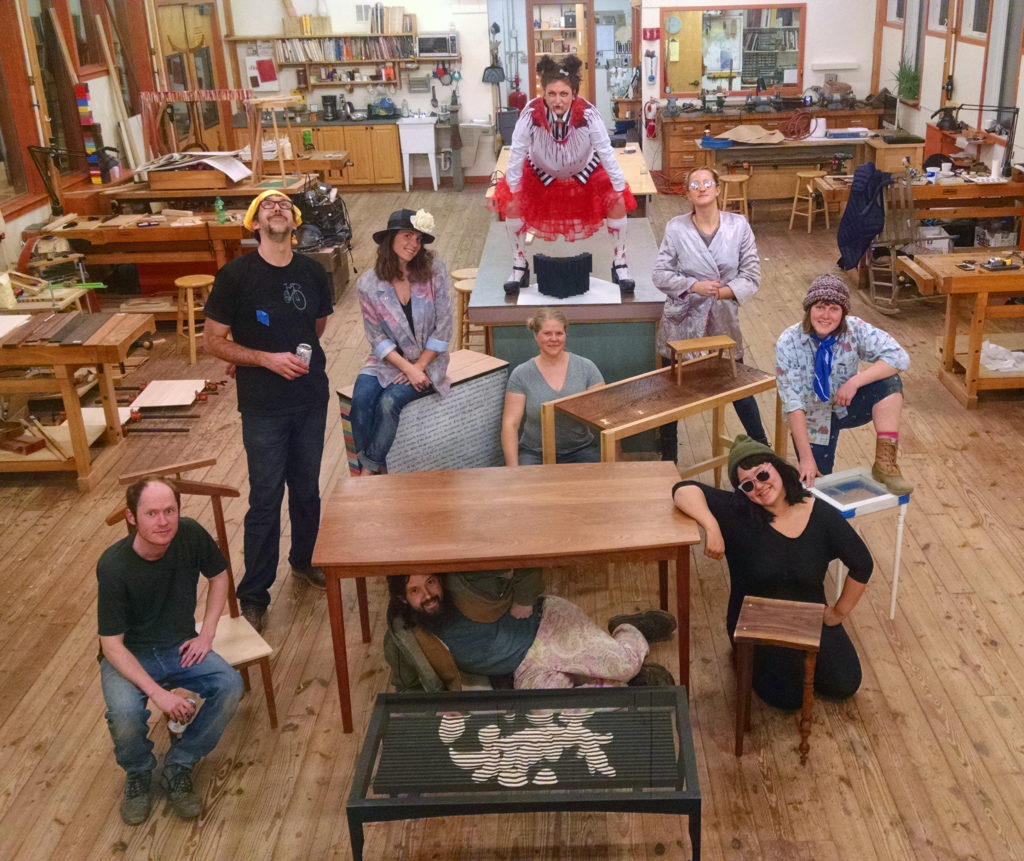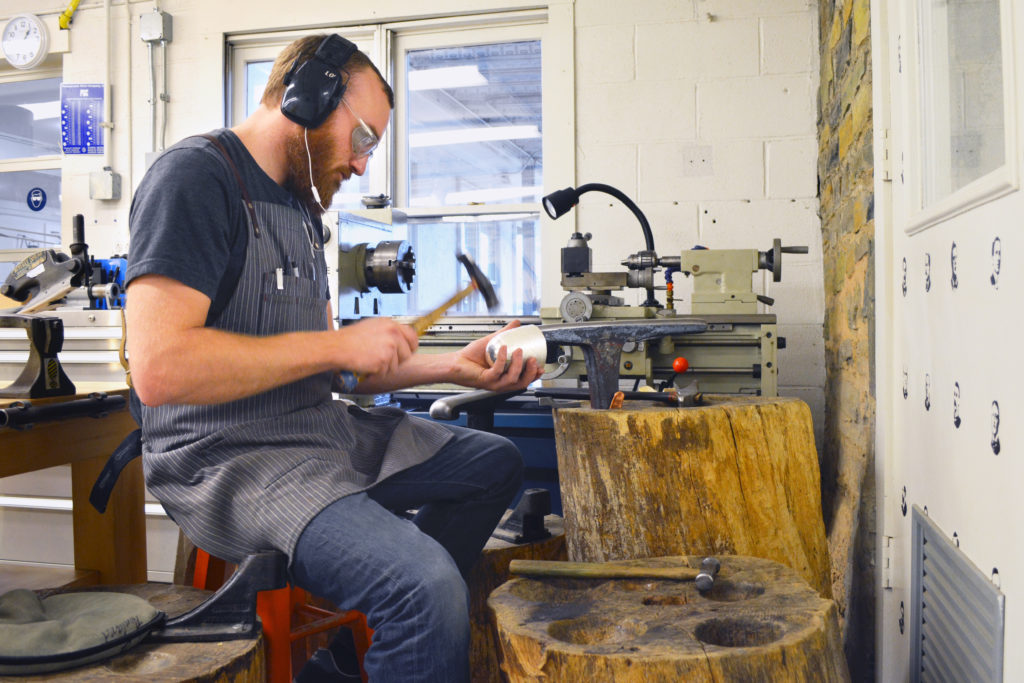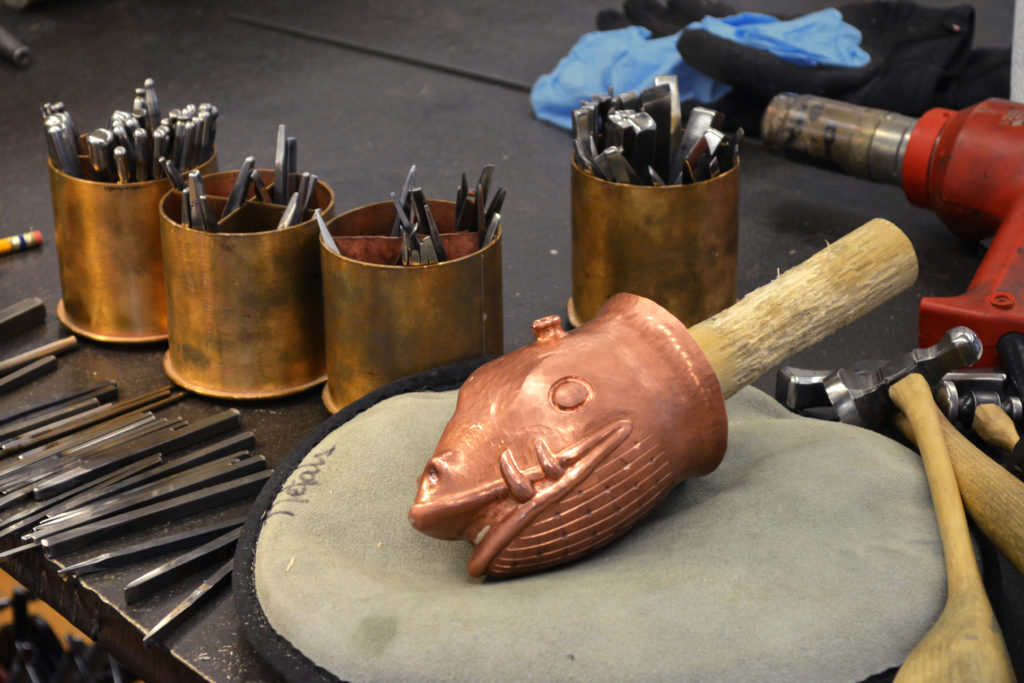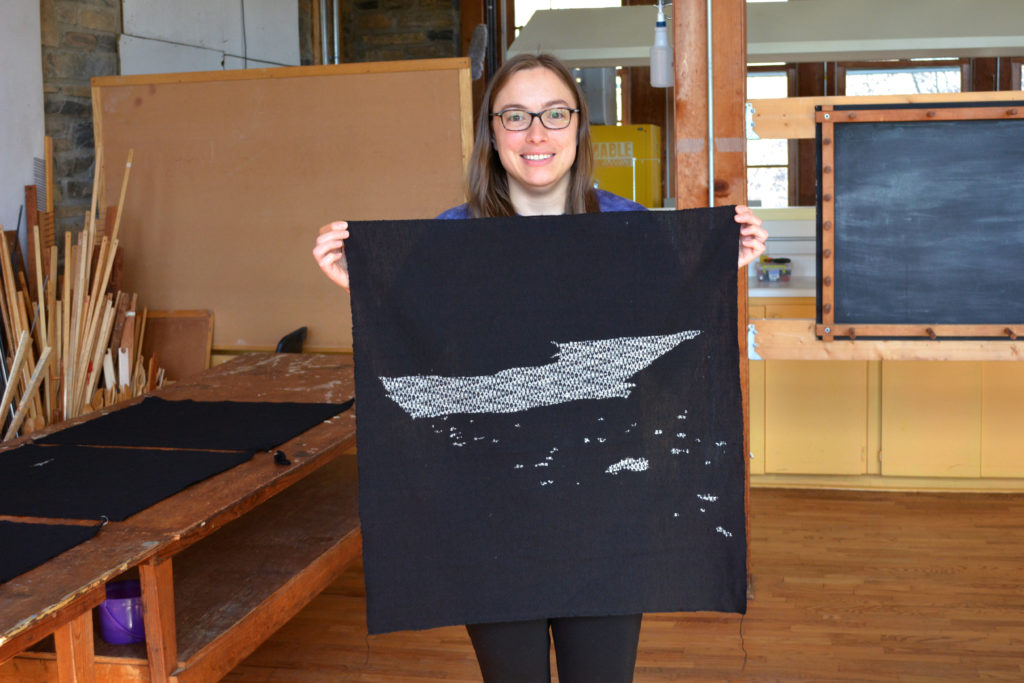
As someone who works on Penland’s digital media, there’s often a computer screen between me and the moment-to-moment happenings in the studios. I experience workshops vicariously through the posts of Penland students, instructors, and residents, and I usually know these people by their Instagram handles before I know their real names.
Until recently, I knew Penland student and winter resident Kim Mirus only through the gorgeous images she shares of her work. I marveled at her ability to capture quiet details at the loom and the way she transformed sunlight, shadow, and fiber into rich visual moments. But it wasn’t until I visited her in the textiles studio this winter that I understood that Kim’s weavings, just like her photographs, are characterized by a thoughtful treatment of materials and a keen attention to the world around her. Many of her pieces address social and environmental topics; recent themes include juvenile incarceration, the near extinction of the American bison, and climate change.
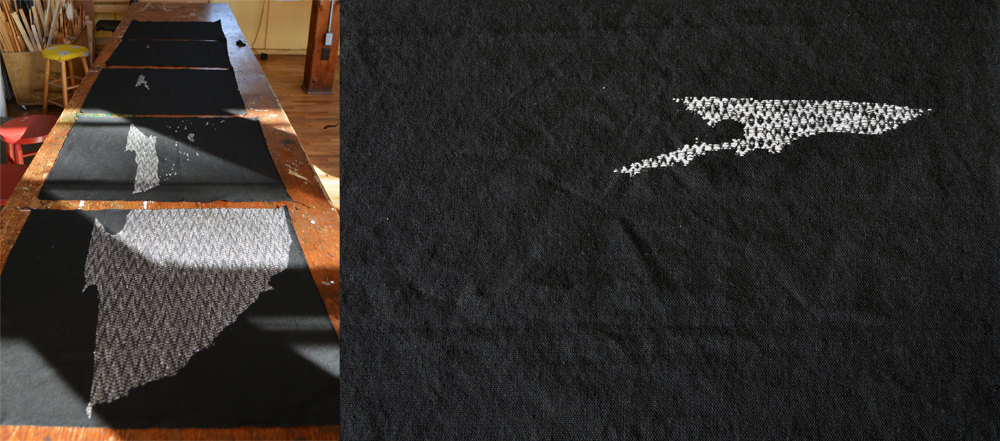
Kim used her time as a winter resident this January to weave samples, dye fibers, and explore new ideas. When I visited, she showed me the series of five woven panels she had just completed. The first is a black field with a large area of white woven into it. The second is similar, but the white area has shrunken noticeably and fragmented apart. In the third, only a small fraction of the central white area remains. It’s barely a smudge on the fourth panel, and the fifth is a solid square of black. “It’s the Muir Glacier in Alaska,” Kim tells me. “This is the area it covered in the oldest photographs I could find, over 100 years ago,” she continues, pointing to the first panel. “And this is how much of the glacier is left today.” She points to the third panel, and the pattern from there is clear: accelerated warming hastening glacial retreat until soon, the entire Muir Glacier will exist only in our photographs and memories.
Kim refers to these pieces as “woven data” because, like graphs or charts, they are visual representations of information presented on cloth. “I want to get people thinking about these issues,” she explains, “and I find that weaving is a non-confrontational way to start conversations that can sometimes be uncomfortable or divisive.”
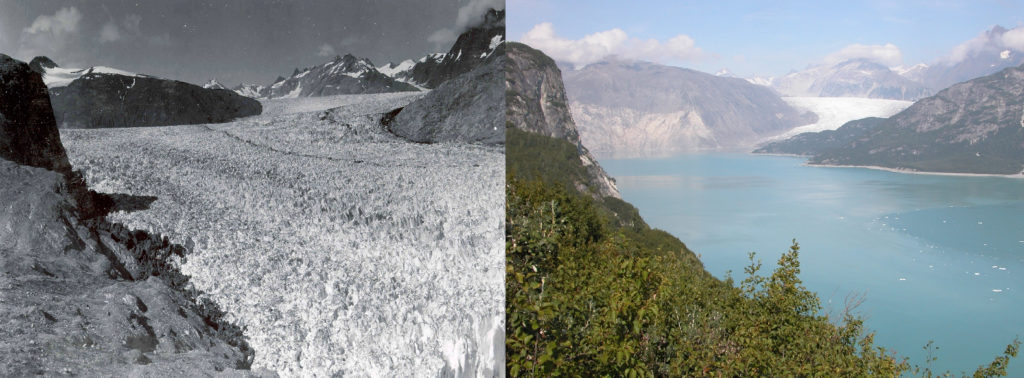
Kim’s Muir Glacier series is a beautiful example of how craft can be a powerful tool—not just for its beauty or for the skill inherent in its creation, but for its power to open up new lines of communication. Indeed, it was the graphic pattern and texture that drew me to her work, but it’s the receding glacier and our warming climate that I’m still thinking about two weeks later.
See more of Kim’s work on her website
Read about the USGS’s work to document glacial retreat in Alaska
— Sarah Parkinson


